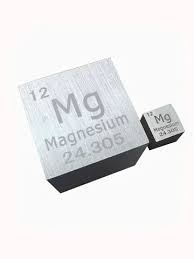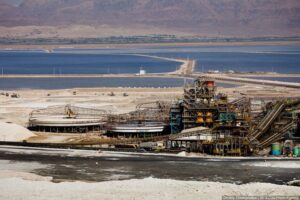Technology of magnesium production by electrolytic method in bipolar electrolyzers

JSC “Titanium Institute” has a modern advanced technology for the continuous production of magnesium by electrolysis in bipolar electrolyzers.
The design feature of bipolar electrolyzers and their difference from monopolar ones is that, in addition to the cathodes and anodes connected to the corresponding terminals of the DC busbar, there are electrode plates between them that are not connected to the busbar. When DC passes through the electrolyzer, one side of the electrodes works as an anode, and the opposite side as a cathode. Due to this, the number of electrical contacts is significantly reduced, which, together with the reduced distance between the electrodes, ensures a significant reduction in electricity consumption for the production of raw magnesium.
According to traditional technology, about 15 thousand kWh of electricity is spent on the electrolysis section to produce one ton of raw magnesium, and when using bipolar electrolyzers, this figure is 10 thousand kWh. The presence of bipolar electrodes in the electrolyzer allows for a multiple increase in the productivity of a single unit with the same current strength.
Electrolyzers with two bipolar electrodes for each “cathode-anode” pair allow for three times more magnesium to be obtained from one electrolyzer compared to monopolar electrolyzers.
ADVANTAGES OF THE TECHNOLOGY
- The production process in the bipolar electrolyzer is automated. The electrolysis series automated process control system controls and maintains the specified process parameters. Among the main and important parameters for magnesium electrolysis technology, maintained in automatic mode, are the temperature and electrolyte level.
- The hermetic design of the electrolyzer eliminates the ingress of chlorine into the environment, which makes magnesium production technology safer.
- Technical modernization of magnesium electrolysis production with the introduction of electrolyzers of a new design will significantly improve the technical and economic performance of the enterprise and raise its technical level to modern requirements.
PROJECTS
- Design and supervision of construction of a magnesium plant in Israel for DSW, Israel.
- Design of construction of a magnesium plant in Australia for Aluminium Elloys & Metallurgical Processes Ltd, CREST Magnesium NL, Indcor Ltd.
- Design of magnesium production for CHINA NATIONAL TECHNICAL IMPORT & EXPORT CORPORATION, PRC, Zunyi Titanium Co., Ltd., PRC, JNMC, PRC, CYMGHT, PRC, UKTMK JSC, Kazakhstan.

Get a free consultation and presentation of our technologies!
Fill out the form and our experts will contact you to discuss the details, answer your questions, and offer the best solutions for your business. In the “Message text” field, briefly write what you are interested in.